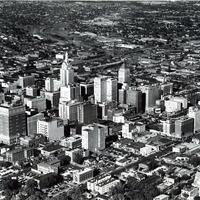-
Format
-
book
-
Creator
-
Halpern, David
-
Title
-
Tulsa art deco
-
isbn
-
978-0-9712078-0-6
-
Has Version
-
https://www.worldcat.org/title/48645104
-
Abstract
-
Tulsa, Oklahoma, Oil Capital of the world, came into its mineral inheritance in its youth, just as Art Deco came onto the scene, and the style and the city evolved together for nearly half a century. This book traces the current of Art Deco that flows through the city's built history. Empowered by its exuberant new oil wealth, Tulsa erected lyrical skyscrapers in the Zigzag style and the Jazz-age twenties roared. Gillette-Tyrell and Philcade rose with profits from black gold while Christ the king and Boston Avenue Methodist Church invited souls to expand with the material world raising their bricks and mortar toward heaven. During the Depression, the city built closer to earth in the more austere WPA style, concentrating on the needs of the people with Will Rogers and Daniel Webster high schools and the Fairgrounds Pavilion. As "jazz smoothed into swing" in the speed-intoxicated 30s and 40s, the city built sleek, flowing Streamline Deco places of business-gasoline service stations, the Big Ten Ballroom, Brook Theater, corner diners-and a number of superlative private residences. In the 50s, Deco went Moderne
-
number of pages
-
204
-
Publisher
-
Tulsa Foundation for Architecture
-
Publication location
-
Tulsa, Okla.
-
Identifier
-
ISB2TRPN
 Tulsa, Oklahoma
Tulsa, Oklahoma
 Tulsa, Oklahoma
Tulsa, Oklahoma